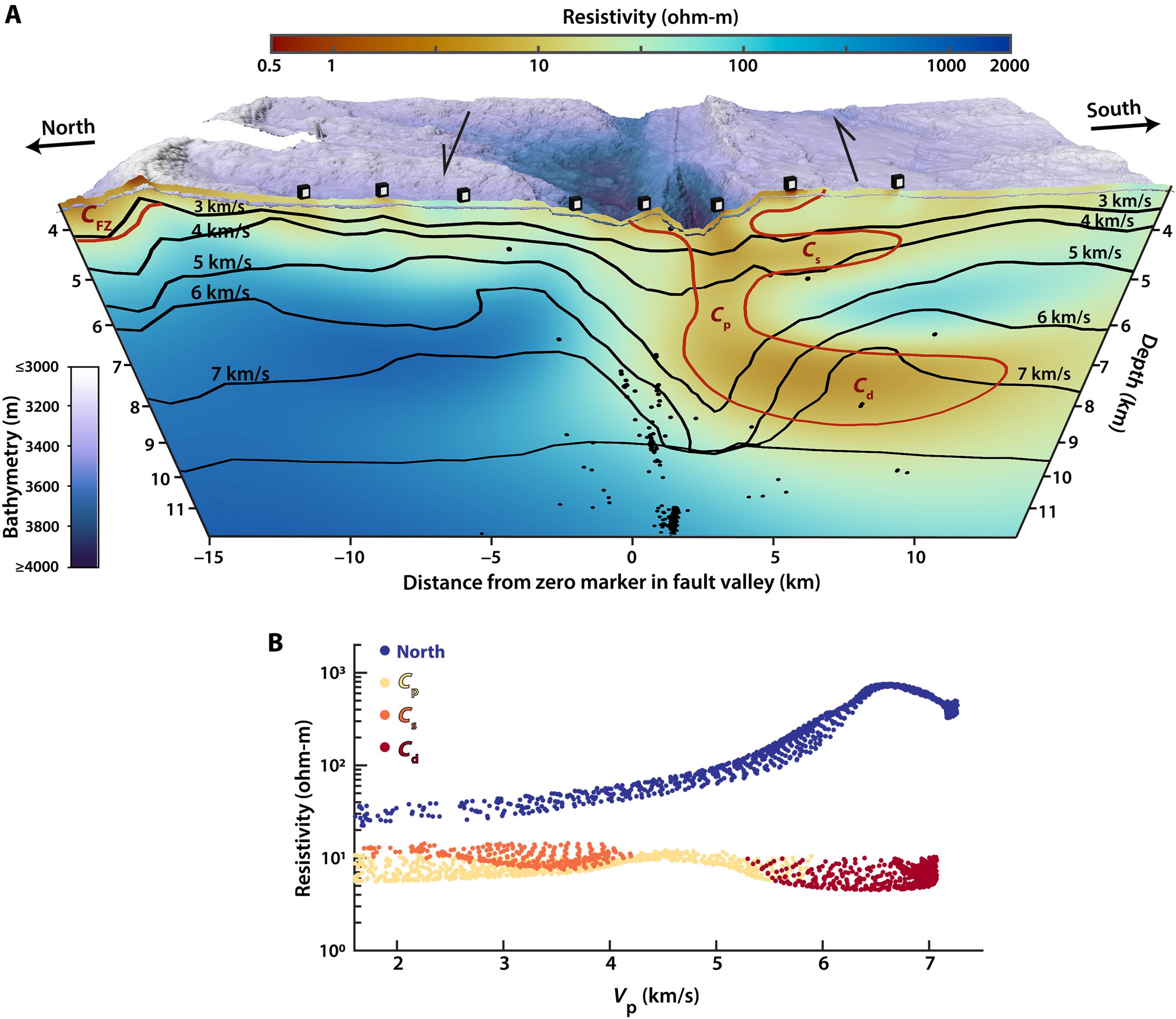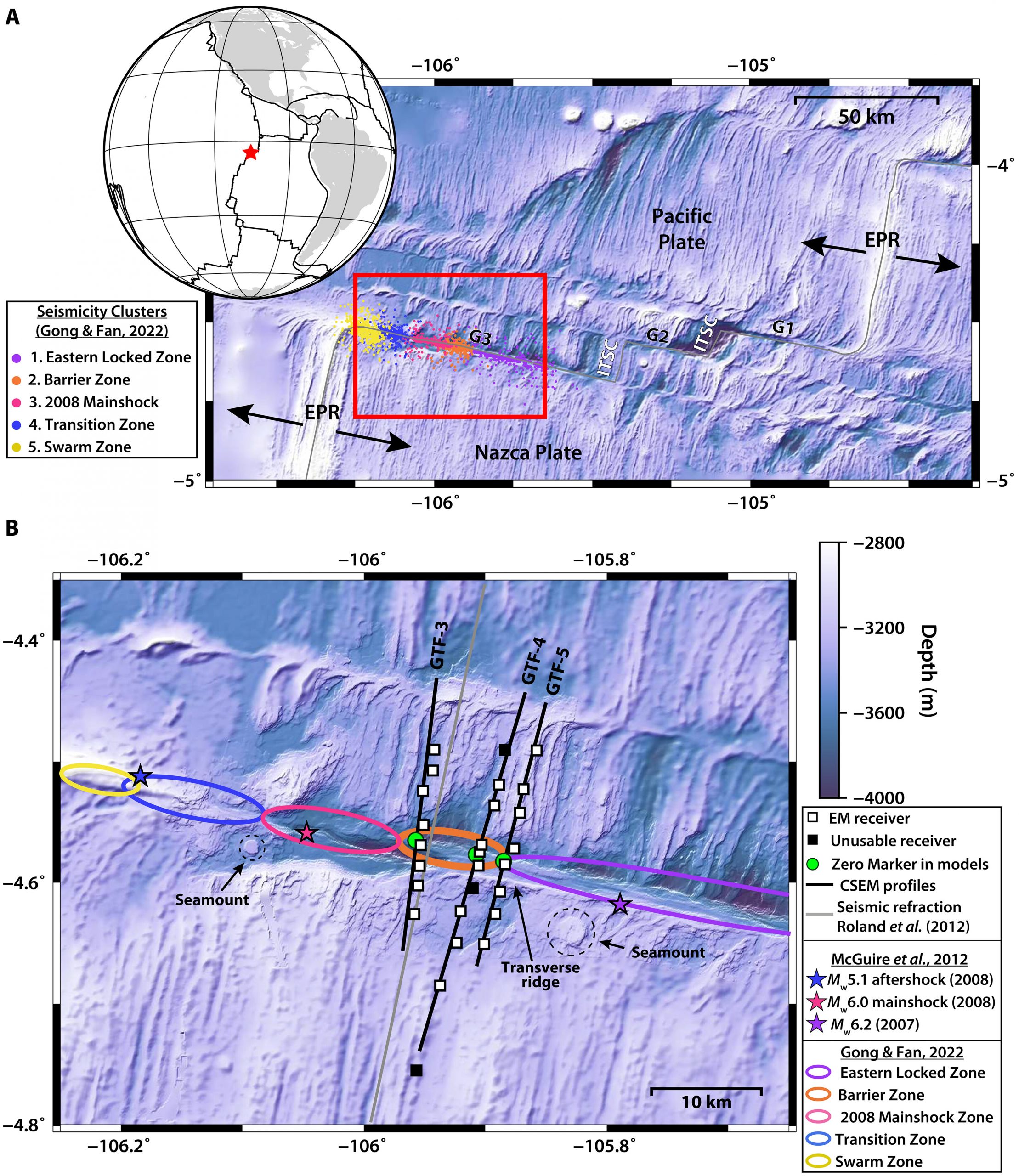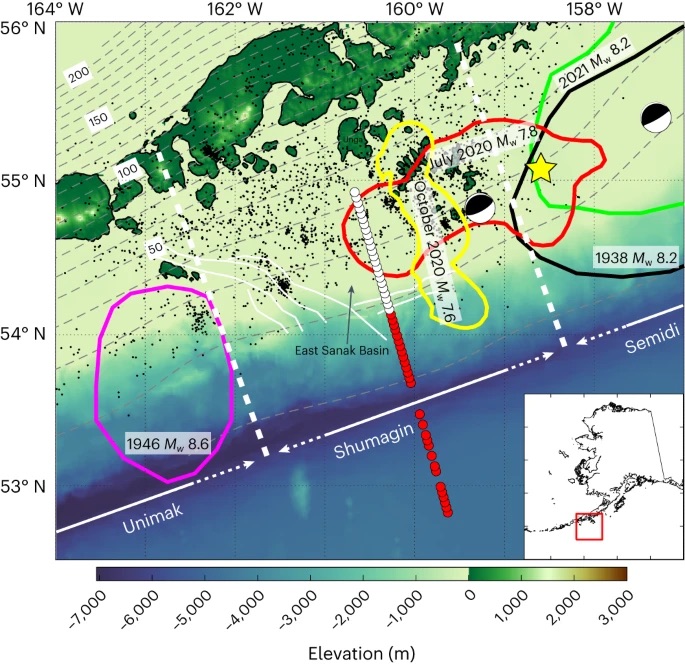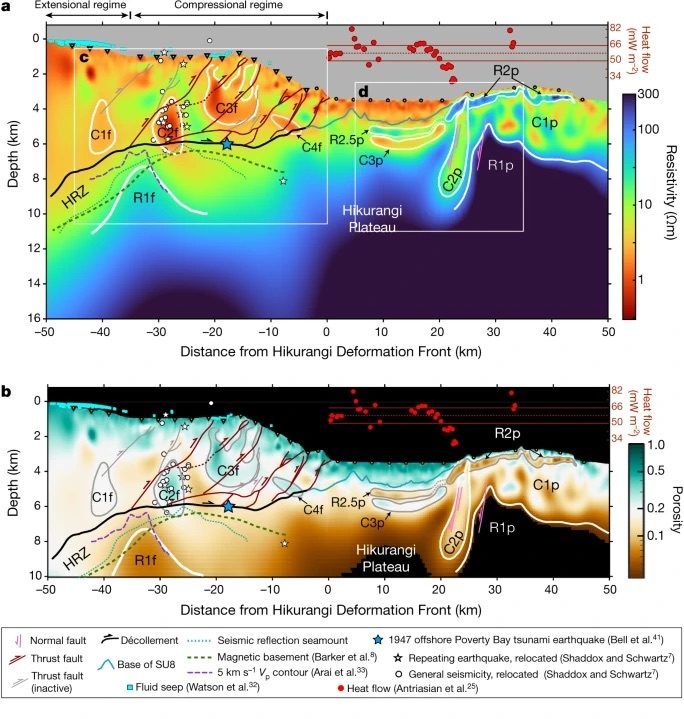Publications
Highlights from our publications!



A recent paper by postdoc Christine Chesley explores the results of a controlled source electromagnetic survey showing surprising features around the Gofar oceanic transform fault.
The behavior of the Gofar has puzzled scientists for several decades. The fault exhibits a clear pattern in seismicity: large earthquakes occur every 5 years on some sections, but are completely absent in other sections. Numerous geophysical studies have suggested that fluid may inhibit large earthquakes in certain areas, but direct evidence for fluid content on the Gofar was limited, prior to Christine's work. The new CSEM models reveal a detailed conductivity structure in the crust around the fault, including a conductive fault core that likely reflects penetration of seawater into the lower crust 5-6 km down. This fluid may contribute to the reduction of earthquake magnitudes on this section of the fault, which is consistent with the hypothesis proposed in previous studies.
However, the most dramatic feature of Christine's models was completely unexpected. The CSEM survey revealed a huge conductor in the lower crust, too intense to be explained by seawater. High salinity brine (with salt comprising about a third or a half of the total fluid) is more conductive than seawater (with a salinity around 3.5 % by weight). Brine can form when seawater is drawn into the crust by hydrothermal circulation and heated to super critical temperatures, causing the water to separate into a low salinity super critical phase that rises back to the surface of the earth and a denser brine that is retained in the crust. This process could explain the huge conductor in Christine's models and would imply a heat source, like a body of magma, hiding just below the model's depth of resolution, far from the main axis of magmatism on the nearby ridge.
This work was published in Science Advances this winter (doi: https://doi.org/10.1126/sciadv.adu3661). Congrats, Christine!
From the results of a collaborative study on the Aleutian subduction zone in Alaska, Darcy Cordell and collaborators published a new paper on the dynamics of this margin. A portion of this subduction zone, known as the Shumagin Gap, was the focus. Unlike the other segments of the subduction zone, it is rarely the source of large earthquakes and we set out to shed some light on why this might be.
The study found that fluids play a pivotal and unexpected role in earthquake behavior, click the photo to learn more!

This paper details a recent study done by ELECCTRO post-doc, Christine Chesley and collaborators on New Zealand's Hikurangi Margin. This is a subduction zone, where two tectonic plates collide and the denser of the two is pulled deep into the mantle. These boundaries host the largest and most destructive earthquakes, which is why we are invested in understanding subduction systems more fully.
To do this we used EM data, which are highly sensitive to conductors, like seawater, melt, and metallic minerals, allowing us to determine where these components are present in the subduction system.
Using our EM data, we imaged a seamount along the seafloor and one that is already subducting. The results from the seamount along the seafloor revealed that these features have a strong core and can store larger amounts of water than typical ocean sediments. These features can damage the overriding plate while also transporting excess fluids to the plate interface or deeper, this was confirmed by the subducted seamount that we imaged.
All Publications
Click any module to expand it and see notable papers from that year.
